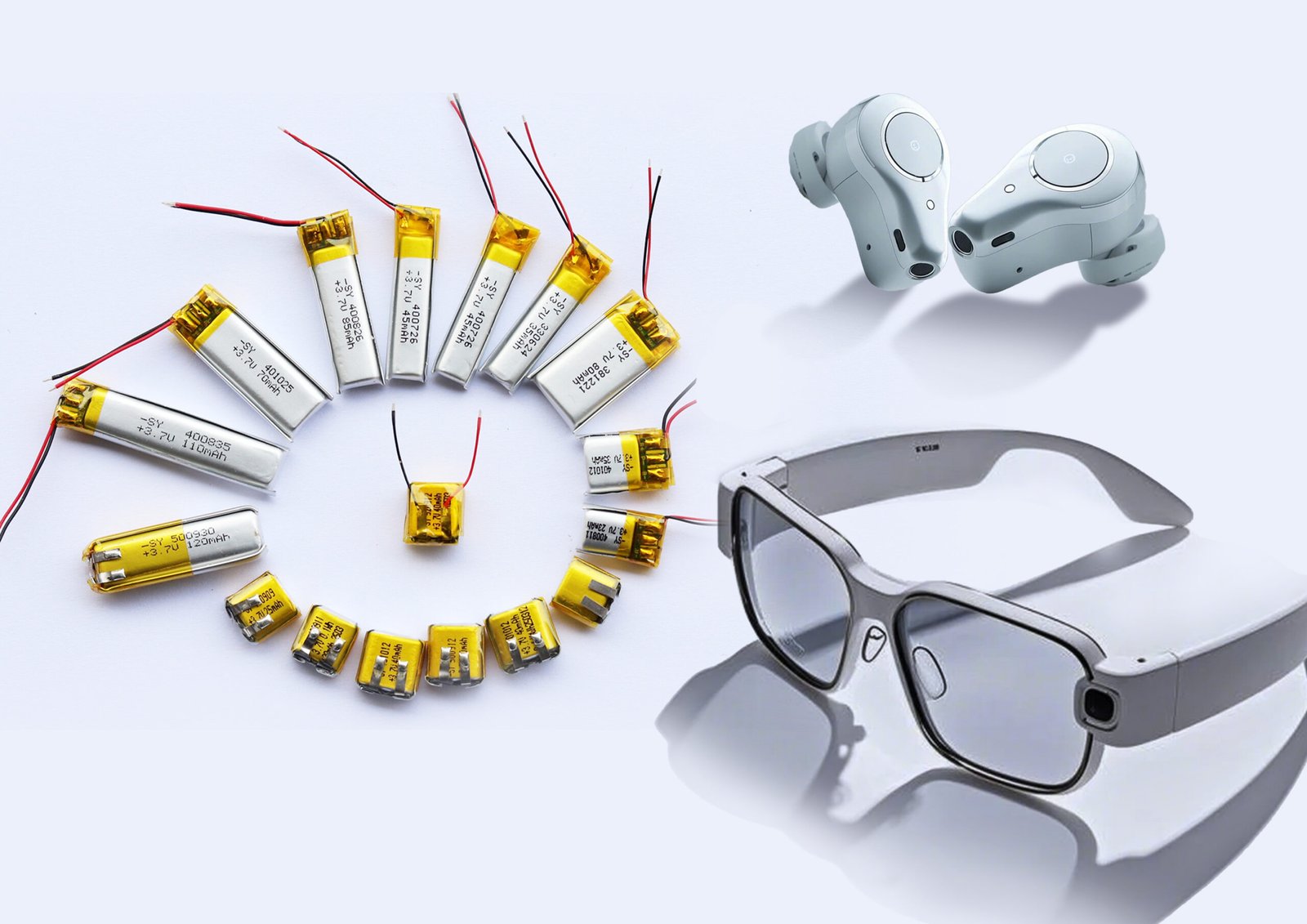Table of Contents
ToggleIntroduction
In today’s fast-evolving electronics industry, polymer lithium batteries have established themselves as the optimal energy source for a broad range of applications—from consumer electronics and medical devices to IoT gadgets, wearables, and electric vehicles. For Original Equipment Manufacturers (OEMs), leveraging battery customization is essential to optimize device performance, miniaturization, safety, and cost efficiency.
Off-the-shelf battery solutions often fall short in meeting unique product requirements, such as specialized physical dimensions, required power profiles, and regulatory compliance. As such, knowing the key ten customization options available for polymer lithium batteries empowers OEM buyers to collaborate smoothly with suppliers and ultimately deliver devices optimized for their target markets.

This article provides a comprehensive overview of the critical customization dimensions OEMs should consider when sourcing or designing polymer lithium batteries, with practical insights informed by industry best practices and companies like Lipobattery SY (lipobatterysy.com)—a trusted provider specializing in customized lithium polymer battery solutions.
Why Battery Customization Matters for OEM Buyers
OEMs today face increasing pressure to differentiate their products in highly competitive and regulated markets. Battery customization impacts core areas such as device usability, longevity, safety, certification, and overall cost.
The consequences of mismatched batteries include:
-
Reduced operational runtime or excess device bulkiness.
-
Incompatible voltage causing electronics malfunction.
-
Higher safety risks, including thermal failures or electrical shorts.
-
Non-compliance with safety standards or transportation regulations.
-
Difficulties in assembly, servicing, and end-user satisfaction.
Through customization, OEMs gain:
-
Tailored battery specs to precisely meet device power needs.
-
Optimized form factors to lower device thickness and weight.
-
Integrated safety systems meeting specific regulatory demands.
-
Enhanced quality control and traceability.
-
Greater control over supply chain and total cost of ownership.
Ten Essential Polymer Lithium Battery Customization Options
| Customization Option | Description | Benefit to OEM Buyers | Key Considerations |
|---|---|---|---|
| Capacity Customization | Adjusting battery capacity (mAh) to device energy consumption | Maximizes runtime and balances battery size and cost | Balance between size, weight, and desired battery life |
| Voltage Customization | Selecting nominal voltage or number of cells in series/parallel | Ensures compatibility and efficient power delivery | Impacts circuitry design and charging strategy |
| Size and Shape Customization | Designing battery physical dimensions and geometry | Enables compact or irregular form factors for devices | Critical for wearables, medical devices, and slim gadgets |
| Chemistry Customization | Choosing cell chemistry (LiPo, LiFePO4, NMC, etc.) | Tailors safety, energy density, lifespan, and cost | Depends on operational environment and power requirements |
| Protection Circuitry Customization | Integrating specific protection circuits or BMS | Enhances device safety and battery health monitoring | Required to comply with regulatory certifications |
| Connector and Wiring Customization | Specifying connectors, cable types, and wiring lengths | Simplifies production and improves mechanical reliability | Must correspond to device input/output interface standards |
| Firmware/Software Customization | Developing specialized BMS firmware for monitoring and diagnostics | Improves battery management and predictive maintenance | Enhances diagnostics, state-of-charge estimation |
| Packaging and Labeling Customization | Creating customized external packaging and regulatory labeling | Ensures compliance and brand recognition | Includes regulatory marks, warnings, and traceability codes |
| Testing and Certification Customization | Conducting specific testing per device needs and standards | Verifies performance, safety, and regulatory compliance | Aligns with IEC 62133, UL, UN38.3, and other certifications |
| Assembly and Integration Customization | Designing battery for optimal seamless integration into device | Streamlines assembly, improves product robustness | Facilitates repairability and manufacturing efficiency |
Capacity Customization
Capacity is one of the primary factors determining device runtime—the milliampere-hour (mAh) rating defines the stored energy available. For OEM buyers:
-
Accurate capacity specification based on detailed power profiling prevents oversizing or undersizing.
-
Under-specification leads to frequent recharging and decreases user satisfaction.
-
Over-specification results in unnecessary size, weight, and higher costs.
Effective capacity customization often involves balancing capacity with device ergonomics, intended usage patterns, and ambient conditions.
Voltage Customization
Voltage customization is typically achieved by modifying the number and arrangement of cells:
-
Single cells often provide nominal voltages around 3.7V.
-
Series connections increase voltage (e.g., 7.4V for two cells in series).
-
Parallel connections increase capacity while keeping voltage constant.
Choosing the appropriate pack voltage ensures device electronics operate within safe design margins, maximizing efficiency and avoiding damage.

Size and Shape Customization
Custom shapes and dimensions are essential for niche device designs:
-
Ultra-thin pouch batteries fit wearables, smart cards, or medical patches.
-
Curved or irregularly shaped batteries optimize devices with ergonomic constraints.
-
Mechanical integration of the battery must account for shock absorption and thermal management.
OEMs advantageously engage manufacturers who specialize in precision custom cell fabrication and design.
Chemistry Customization
Battery chemistry significantly influences performance parameters:
-
LiPo (Lithium Polymer) cells enable flexible shapes and high energy density.
-
Lithium Iron Phosphate (LiFePO4) offers enhanced safety and long cycle lives but lower energy density.
-
Nickel Manganese Cobalt (NMC) chemistries balance high energy and power, suitable for EVs.
OEMs select chemistry based on device power demand, safety priority, thermal environment, cycle life, and budget.
Protection Circuitry Customization
Protection is non-negotiable in lithium battery systems:
-
Specific PCM (Protection Circuit Module) or BMS (Battery Management System) designs protect against overcharge, deep discharge, overcurrent, and short-circuit.
-
Custom features include cell balancing, temperature monitoring, state-of-health diagnosis, and communication interfaces.
-
Design must meet regulatory safety standards.
A robust, custom protection circuit enhances user safety and battery longevity.
Connector and Wiring Customization
OEMs often need specific connectors and wire harnesses:
-
Connector type (e.g., JST, Molex, AMP) matched to device interface for assembly ease.
-
Cable length and wire gauge customized based on device layout and current load.
-
Additional shielding or flexibility for harsh environment applications.
Proper specification reduces assembly errors and ensures mechanical endurance.
Firmware/Software Customization
Custom BMS firmware is increasingly important:
-
Enables tailored charging profiles, discharge cutoffs, and temperature limits.
-
Provides communication protocols for device-battery interactions.
-
Facilitates diagnostics, predictive failure warning, and lifecycle management.
OEMs can program firmware to maximize battery performance under specific device operation conditions.
Packaging and Labeling Customization
Packaging can be customized to address:
-
Mechanical protection during transport/storage.
-
Branding elements and regulatory compliance labels.
-
Inclusion of QR codes or batch numbers for traceability.
-
Materials adherence to environmental regulations.
Effective packaging and labeling safeguard battery integrity and streamline regulatory clearance.

Testing and Certification Customization
Depending on application, additional custom testing may be warranted:
-
Electrical performance validation matches device duty cycles.
-
Environmental testing for temperature, humidity, vibration specific to deployment conditions.
-
Safety and abuse testing per relevant standards such as IEC 62133, UL 2054, UN38.3.
-
Certification documentation tailored to target markets.
OEMs benefit from active collaboration with manufacturers to design test protocols that reflect real application scenarios.
Assembly and Integration Customization
Optimizing battery integration expedites device assembly, including:
-
Pre-assembled wiring harnesses.
-
Mechanical fixtures or clips for secure installation.
-
Modular battery packs enabling easy field replacement or configuration.
-
Clear mechanical and electrical interfaces reducing error risk.
Such integration customization translates to cost savings and higher overall product quality.
Detailed Table: Polymer Lithium Battery Customization Options for OEMs
| Customization Option | Description | Benefits | OEM Application Focus |
|---|---|---|---|
| Capacity | Tailoring mAh to device power profile | Balances runtime & battery size | Wearables requiring multi-day use; compact devices needing minimal battery thickness |
| Voltage | Adjusting number and arrangement of cells | Ensures compatibility, optimizes power delivery | Devices with unique voltage rails, multi-voltage platforms |
| Size & Shape | Designing physical battery pack dimensions and geometry | Enables integration in irregular spaces | Smartwatches, health patches, medical implants |
| Chemistry | Selecting cell chemistry to balance safety and energy density | Meets safety, performance, lifecycle, and budget needs | EV battery packs, high-cycle industrial applications |
| Protection Circuitry | Custom PCM/BMS circuits for safety and performance monitoring | Prevents critical failure modes, enables diagnostics | Critical medical/industrial devices, high energy packs |
| Connector & Wiring | Specifying cable, connectors, and cable lengths | Simplifies device assembly | Complex electronic devices needing standardized interfaces |
| Firmware/Software | Developing BMS firmware for power control and alerts | Improves battery health, optimizes usage | High-reliability applications with remote monitoring |
| Packaging & Labeling | Custom packaging and regulatory labeling | Protects batteries, ensures compliance and branding | Global products requiring multiple certifications |
| Testing & Certification | Tailored functional, safety, and regulatory tests | Successful regulatory approvals and market acceptance | Devices targeting strict regulatory regimes |
| Assembly & Integration | Mechanically and electrically optimized battery integration | Reduces manufacturing complexity, increases reliability | Complex OEM assembly lines and modular product designs |
The Custom Polymer Lithium Battery Development Journey for OEMs
OEMs typically navigate these phases when customizing polymer lithium batteries:
-
Requirement Gathering: Collaborate with suppliers to specify power needs, size, charging profiles, safety mandates, and environmental conditions.
-
Conceptual and Engineering Design: Battery manufacturers propose cell form, configuration, protection schemes, connectors, and firmware approaches.
-
Prototyping and Validation: Fabricate samples, perform electrical and mechanical tests, and collect feedback.
-
Certification and Compliance Testing: Conduct formal testing per IEC, UL, UN38.3, and regional standards to validate safety and reliability.
-
Production Ramp-Up: Build production tooling, define quality control processes, and establish documentation for traceability.
-
After-Sales Monitoring: Use data and predictive analytics for warranty and lifecycle management.
Close collaboration maximizes fit-for-purpose batteries and reduces risk throughout the product lifecycle.
Partnering with Lipobattery SY for Polymer Lithium Battery Customization
Lipobattery SY (lipobatterysy.com) offers extensive expertise in personalized polymer lithium battery solutions:
-
Years of experience delivering medical, portable, and industrial customized battery packs meeting international certification requirements.
-
In-house design and testing capabilities accelerate prototype development.
-
Strict quality management systems (ISO 9001, ISO 14001).
-
Collaborative approach to tailor protection circuits, firmware, connectors, and mechanical form factors.
-
International certifications (CE, UL, UN38.3) covered and documented.
-
Flexible minimum order quantities supporting from startups to large-scale production.
This makes Lipobattery SY a valuable partner for OEM buyers seeking reliable, fully tailored battery solutions.

Conclusion
For OEM buyers, fully understanding the ten key polymer lithium battery customization options is vital for selecting battery solutions that meet exact device power, form factor, safety, and regulatory needs. Customization touches everything from capacity and voltage to firmware, packaging, and integration, each impacting final device performance and compliance.
Choosing a supplier experienced in delivering certified, customized polymer lithium batteries—such as Lipobattery SY—enables OEMs to harness the full potential of lithium polymer technology, minimize risks, accelerate time-to-market, and ensure delighted end users.
OEMs equipped with this knowledge are well-positioned to specify and collaborate on battery solutions that power next-generation devices safely, efficiently, and innovatively.
To explore custom lithium polymer battery options tailored for your product, contact Lipobattery SY at lipobatterysy.com for expert consultation and manufacturing excellence.
This article is designed to serve as a practical, detailed reference for engineers, product managers, procurement specialists, and quality teams involved in sourcing or developing polymer lithium battery solutions for OEM products.

